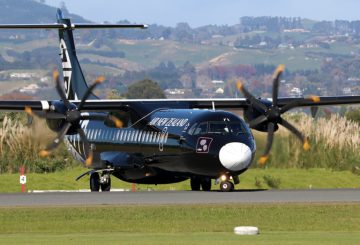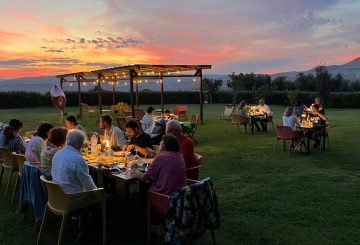Nagtatayo ang Auckland Airport ng isang bagong terminal na magsasama ng domestic at international transfer, check-in, at bag drop sa isang lokasyon. Gayunpaman, ang konstruksiyon na ito ay maaaring maging sanhi ng mga pagkagambala para sa hanggang sa 20 milyong manlalakbay bawat taon hanggang sa makumpleto ang proyekto noong 2029. Ang halos $4 bilyon na proyekto ay papalitan ng lumang domestic terminal ng paliparan, na unang binuksan noong 1966.
Ang bagong terminal ay hindi magiging marangyang, ngunit tutuon ito sa mga pangunahing kaalaman, ayon kay Scott Tasker, punong opisyal ng customer ng Auckland Airport. Ikonekta ng bagong gusali ang mga domestic at internasyonal na terminal, na nagpapahintulot sa mga manlalakbay na lumipat sa pagitan ng domestic at international flight nang hindi umaalis sa paliparan. Ang parehong mga internasyonal at domestic na pasahero ay makakapag-check in sa parehong lokasyon gamit ang mga bagong kiosk at awtomatikong pag-drop ng bag.
Magbibigay ang bagong terminal ng mas mahusay na nabigasyon para sa mga manlalakbay, mas maraming lugar ng upuan, mga istasyon ng pag-charge ng telepono, pinahusay na mga pasilidad sa banyo, at higit pang kapasidad para sa mga airline na magdagdag ng mga flight Gayunpaman, nagbabala si Tasker na magkakaroon ng mga pagkagambala sa susunod na limang taon habang isinasagawa ang konstruksiyon. Sa kabila nito, tinitiyak niya na nagsusumikap ang paliparan upang mabawasan ang mga pagkagambala na ito at humihingi ng pasensya ng mga customer, na nangangako na ang huling resulta ay sulit na maghintay.
Ang bagong terminal, na inaasahang magbubukas noong 2029, ay kinakailangan para magkaroon ng mahusay na domestic terminal ang Auckland Airport. Ang terminal mismo ay nagkakahalaga ng $2.2 bilyon, na may kaugnay na mga gawa, kabilang ang mga pag-upgrade sa airfield, na nagkakahalaga ng halos $1.7 bilyon. Sa kabila ng mataas na gastos, sinabi ni Tasker na ang terminal ay maihahambing sa iba pang mga internasyonal na terminal ng katulad na laki. Binanggit din niya na tataas ang domestic flight charge mula $10.25 bawat pasahero hanggang $15.45 sa 2027, na katulad ng mga singil sa iba pang mga pangunahing paliparan sa New Zealand.
Noong nakaraang taon, ang domestic terminal ng paliparan ay malubhang nasira ng tuhod na tuhod na tuhod sa isang bagyo. Bilang tugon, malaking pag-upgrade ng bagyo ang ginawa sa hilaga ng precinct upang maiwasan ang pinsala sa hinaharap.
Ang pinakamahusay na tampok ng bagong terminal ay itatago mula sa tingin, ayon sa direktor ng proyekto na si Isaac Taylor. Halimbawa, ang bagong sistema ng bagahe ay magiging isang makabuluhang pagpapabuti sa mga tuntunin ng kahusayan sa bagahe ng pasahero at pag-load sa sasakyang panghimpapawid. Ang bagong terminal ay gagamitin ng isang “indibidwal na carrier system”, na mas mabilis at hindi gaanong madaling magkaroon ng jamming kaysa sa isang tipikal na conveyor belt.
Ang kasalukuyang terminal ay maaari lamang maglingkod sa halos 15,000 pasahero bawat araw, ngunit tataas ng bagong terminal ang kapasidad na ito sa halos 20,000 pasahero bawat araw, isang 26% na pagtaas. Ang gawaing konstruksyon sa bagong terminal ay magsisimula sa ibang pagkakataon sa 2024.




























































